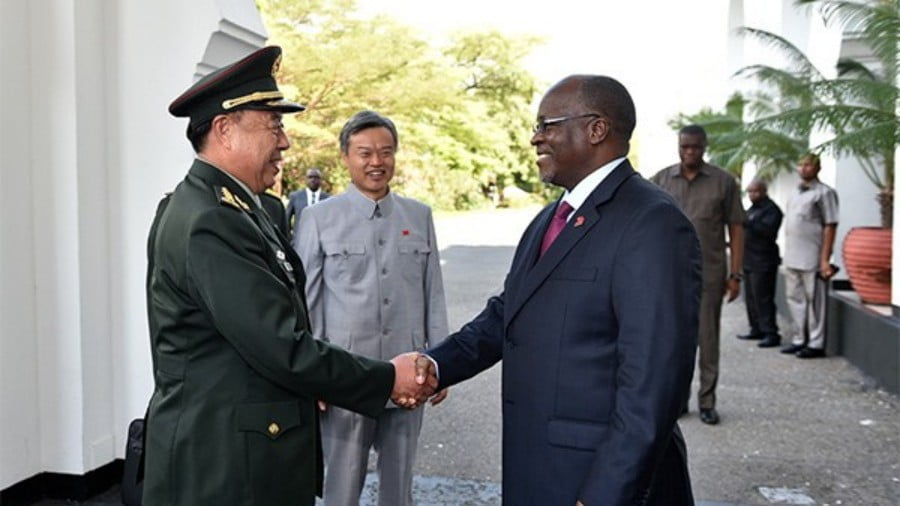OPEC Deal Backfires: Saudis Lose Market Share to Iran, Iraq
Since the start of OPEC’s production cuts, oil market analysts and experts have been focusing on how US shale would respond to the relatively higher and stable oil prices, possibly eating up some of the cartel’s global market share while the cuts last.
The market share war is also going on a micro level within OPEC itself – a diverse group of producers, with each pushing and pursuing their own agenda in every meeting and collective decision. This time around it is no different.
Saudi Arabia, OPEC’s biggest producer and de facto leader, is losing market share, while Iran and Iraq have so far emerged as winners of the cuts with in the cartel in a battle for market share, according to Christof Ruehl, former chief economist at BP who is currently Global Head of Research at the Abu Dhabi Investment Authority (ADIA).
“If you’re talking about winners, you can count Iran and Iraq,” Ruehl said at a Dubai conference last week, as quoted by Bloomberg.
The Saudis were aware that they would be ceding some market share with the OPEC deal, but opted for higher and more stable oil prices by signing up to a deal that allowed Iran to slightly lift its output, while others — especially Riyadh—would have to cut.
The lower-for-longer oil prices have led to a considerable deficit in Saudi Arabia’s budget, and the Kingdom had to draw from reserves and increase the issue of debt to finance the gaps in its oil-dependent government revenues.
The Saudis now need higher oil prices if they want their oil giant Aramco to be valued in next year’s IPO anywhere in the vicinity of US$1 trillion, let alone the US$2-trillion valuation that Deputy Crown Prince Mohammed bin Salman has mentioned.
The Saudi 2017 budget sees higher oil prices this year lifting oil revenues by 46 percent compared to the 2016 estimates.
'No longer cost-efficient': Saudi Arabia to shelve infrastructure projects costing billions as cheap oil bites https://t.co/4Tt8aKL1uU
— RT (@RT_com) April 17, 2017
So, the Saudis entered the OPEC production cut deal knowing that Iran might use the leeway it was given to slightly raise its production, and Iraq might not fully comply with the cuts.
As per OPEC’s agreement, Saudi Arabia had to cut output by 486,000 barrels per day (bpd) to a ceiling of 10.058 million bpd. OPEC’s no.2 producer, Iraq, promised to cut 210,000 bpd to a level of 4.351 million bpd, while Iran – the cartel’s number three and bitter regional rival of Saudi Arabia – was allowed to raise its output to 3.797 million bpd.
While the Saudis have overcomplied with the cuts and kept output below 10 million bpd since January, as per OPEC’s secondary sources, Iran has been pumping as much as it was allowed, and exceeded its quota in February. Iraq, for its part, has failed to comply with the cuts in each of the months through March for which data are available.
Iran and Iraq are looking beyond the cuts and taking steps to raise their output, taking advantage of Saudi Arabia’s current play of overcomplying with cuts and compensating for rogue members.
“The Saudis are losing out because other countries are able to squeeze out more production,” Edward Bell, commodities analyst at Dubai-based lender Emirates NBD PJSC, told Bloomberg.
#Iran ramps up oil output as #OPEC production falls https://t.co/78UODXfyQz pic.twitter.com/Ox2tCiOrQ6
— RT (@RT_com) April 14, 2017
Saudi Arabia is trying to preserve its market share amid the cuts and has been lowering the official selling price for Arab Light and Arab Extra Light varieties for Asia for two months now. The Saudis are expected to slash Arab Light prices to Asia for June to the lowest pricing in nine months, as the Middle East benchmark Dubai crude is falling due to oversupply, according to a Reuters survey of five Asian refiners.
Saudi Arabia is also said to be trying to lure buyers from European markets by changing the way it prices its oil in order to make it easier for hedging.
In a sign that the higher oil prices are helping Saudi budget revenues, reports suggested last week that Saudi Arabia had reinstated perks for civil servants, after revenues for the first quarter turned out higher than expected.
Now the oil market and analysts are waiting to see whether OPEC will decide to roll over the production cuts until the end of the year.
The current Saudi rhetoric to the market is that there seems to be a consensus over extending the cuts beyond June, but further discussions need to be held, including with non-OPEC Russia.
The Saudis may demand that Iran also cuts output and insist that non-complying members (such as Iraq) finally get in line as a condition to roll over the cuts, S&P Global Platts reported in March, citing people familiar with the Saudi thinking.
With Iran unlikely to concede to any cuts now that it has regained the market share it had lost to the Western sanctions, the Saudis may find it difficult to impose such a deal.
But with the possibility that oil prices may fall below US$40 if the deal is not extended, in the end Saudi Arabia may once again choose higher oil prices over market share.
By Tsvetana Paraskova
Oil Price







